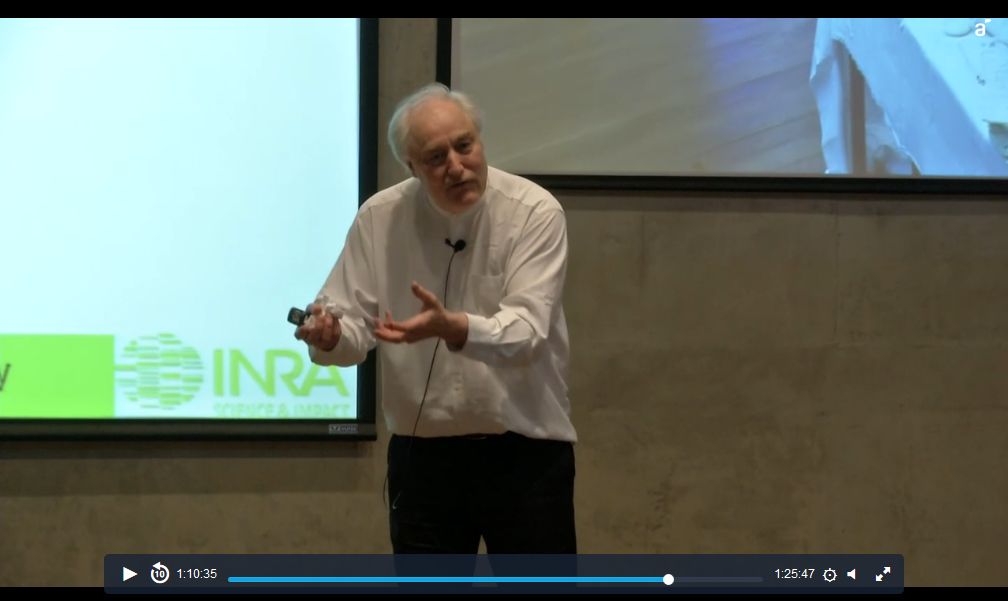Vera+ publicó la conferencia que el Prof. Hervé This, padre de la gastronomía molecular, brindó en nuestra Facultad el pasado 20 de marzo de 2017, titulada “Resultados recientes en gastronomía molecular y aplicaciones en la comida del futuro (note by note cooking)”.
El Prof. This es fisicoquímico titulado de la École Supérieure de Physique et de Chimie de Paris. Junto al Físico británico Nicholas Kurti, concibió el término de “gastronomía molecular” para definir las transformaciones moleculares de los componentes de los alimentos mediante técnicas culinarias, lo que lo ha llevado a ser reconocido mundialmente. También se desempaña como director del AgroParisTech-Inra International Centre for Molecular Gastronomy y es Jefe del Inra Group of Molecular Gastronomy in the Laboratory of Analytical Chemistry of AgroParisTech, entre otros cargos.
Resumen de la Conferencia: “Resultados recientes en gastronomía molecular y aplicaciones en la comida del futuro (note by note cooking)”
Food can be described at various scales (from the molecular level to the macroscopic scale) using a formalism taking into consideration the nature of phases as well as their relative topological arrangement (This, 2009). It can change during processing such as in the culinary practice (Aguilera, 2012). The Disperse System Formalism (DSF) scheme (This, 2007) can apply to any scale, according to their “degree of complexity”. For example, custard which is made of oil droplets O (from milk), air bubbles G (introduced during the initial whipping of sugar and egg yolks) and small solid particles S (due to egg coagulation during thermal processing) all dispersed in an aqueous phase (W), may be described as [D0(O) + D0(G) + D0(S)]/D3(W). When applied to French classical sauces compiled from culinary books, 23 categories of products were found. For the “solid content” of food, it was recognized that it is primarily made of gels (This, 2012), i.e. colloidal systems made of a liquid phase in a solid phase. However the same word "gel" applies traditionally to very different systems, either non connected such as plant tissues (assuming the cytosol is a liquid), or connected, such as jams. Using the DSF, all kinds of gels could be recognized, and in particular new dynamic gels, called dynagels. Their original bioactivities can now be explored, making the basis of a new way of preparing food structured at any scale: “note by note cooking”.

